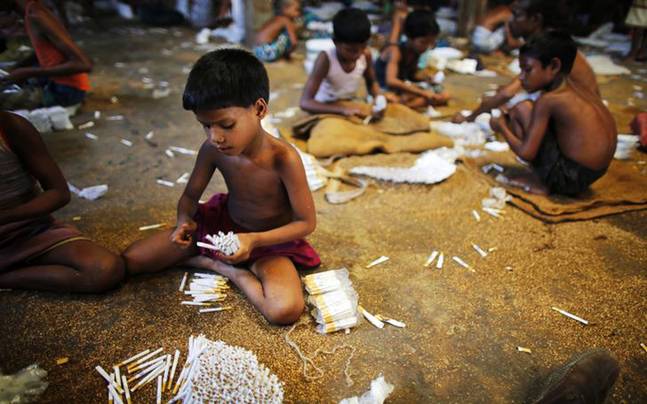The International Labor Organization defines ’Child labor’ as work that deprives children of their childhood, their potential, and their dignity, and that is harmful to physical and mental development. Not just physical and mental, it also has social and moral consequences while also interfering with their education. Worldwide, millions of children are trapped in child labor. Child labor deprives these amateur souls of their childhood, access to proper health as well as attaining proper education.




The origin of child labor is multi-factorial. It stems from long-rooted inequality, lack of education, slow demographic transition, and orthodox beliefs. For these reasons, children are often abandoned by their poverty-stricken families to make an earning for themselves. If not abandoned, these children are sent to work to add to the family’s income. In both cases, the child is ultimately burdened.
Worldwide, the number of child laborers reduced from 246 million in 2000 to around 152 million in 2016 (ILO 2017). India is a major contributor to the existing burden of child labor in the world. It accounts for almost one-tenth of all the existing child labor worldwide (Census 2011). This translates to about 12.9 million Indian children aged 7-17 years old who are engaged in labor. These children work a gruesome amount of as long as 16 hours a day to help their families make ends meet. An even smaller age group of children aged between 5-15 years old are also employed and amount to roughly 10.1 million children.
Child workers are illiterate as well. About 1.4 million child laborers in India in the age group of 7-14 years can’t even write their names and so this means that one-third of all child laborers aged 7-14 years are illiterate (Census data, CRY). When these children grow, they remain at risk of job insecurity. Because of their illiteracy, their offspring, and ultimately all future generations are prone to be trapped in this vicious cycle of labor, poverty, and illiteracy.
Children are employed at all sorts of industries ranging from agriculture to serving as service staff (domestic workers or restaurants) or even jobs in the industry sector (factories manufacturing textiles, bricks, tobacco, steel, gems, and carpet) to name a few. Over the years, a transition has been observed in the nature of child labor.

In 1993, GoI enacted a law against child labor that prohibits dangerous work/activities that could hinder the development of children under 18 years of age. While constant revisions have been brought about in this act, perpetrators continue to find loopholes to use it to their advantage by exploiting children.
Child labor can be prevented through integrated approaches that strengthen child protection systems. Economic improvement in the country, maintaining the labor standards, universalization of education, social protection and ultimately recognizing the needs and rights of the children will help address child labor (ILO).
Aastha Nishtha Foundation believes in a civil society where every child lives an educated and dignified life. We are here to spread awareness in the community to prevent disruption in schooling of these children and pushing them into labor. An educated community comprehends and responds better to the importance of children’s education and help create a socially and economically developed society. Our aim is to provide these children with better future and greater opportunity. Every contribution received, counts in fighting against such evils in the society.
For regular updates about our campaigns and services provided to underprivellage children. We would love to connect with you.
Copyright @ 2020 Aastha Nishtha Foundation. All Rights Reserved. Design and Developed by Themes Glance
You can see how this popup was set up in our step-by-step guide: https://wppopupmaker.com/guides/auto-opening-announcement-popups/
